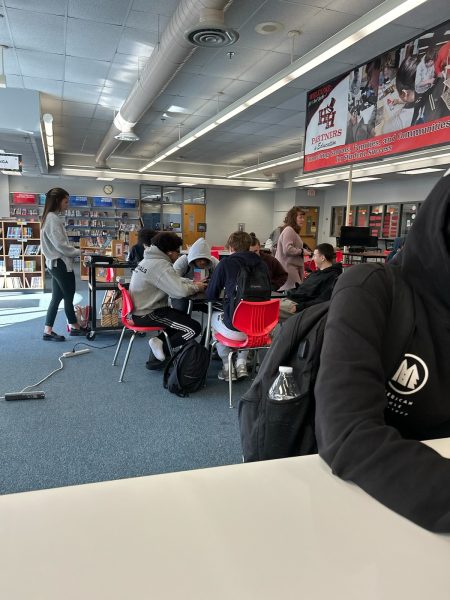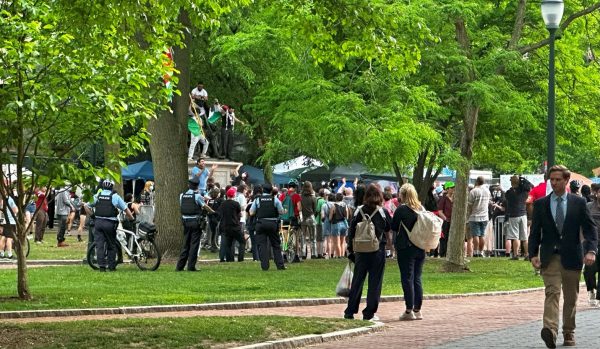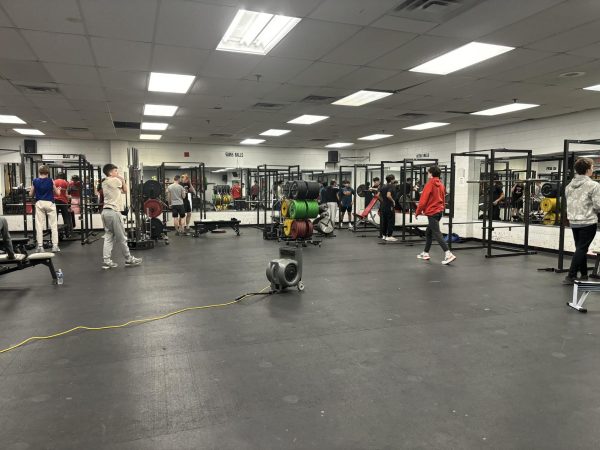Opinion: Awareness of Student Press Freedom
*This editorial was originally written by Hat Chat copy editor Lily Wu as part of a workshop offered by The Student Press Law Center and appears in its original form. A modified version was published by Montgomery News.
The right to free speech has been spotlighted in recent American politics, with accusations of censorship coming from all over the political spectrum. Feb. 26 was national Student Press Freedom Day, and I think it is timely to look at the debate over free speech in the context of student journalists.
To preface, I have never faced censorship as a Hat Chat student journalist. In fact, this only inspires me further to discuss the topic – after all, it is only the unmuzzled who can speak up for the muzzled.
The impetus for my writing this is a video I stumbled upon recently, showing Ohio State student journalists in Columbus being pepper sprayed by policemen in June despite insisting that as members of the press, they were exempt from the curfew. As a sophomore student journalist growing up in a world that seems to be moving too fast, much of my horror stemmed from the thought, “That could be me soon.”
Like myself before viewing that video, I’m sure that many are not aware of the harassment that student journalists can face in this country. So, it is all the more important to call attention to this.
The censorship of student press strikes me as especially relevant in the context of recent events on the world stage. Namely, the coup in Myanmar on Feb. 7, in which the military overthrew the democratic government. To stymie the people, they shut down the Internet and banned Facebook nationwide to ensure “stability.”
Of course, that blatant censorship is far more egregious than what student journalists from Ohio State faced in June. In no way am I suggesting that the actions of those American policemen were analogous to those of the junta, nor do I think the United States is on a path to that degree or intensity of press censorship.
However, the common denominator I saw was the fear that motivated the repression. The junta was afraid of the world’s eyes, so they closed off the means of communication of millions of Burmese. The Columbus policemen were also afraid of scrutiny, so they tried to stifle voices. Both were determined to cover up the fissures of instability. Both were fearful of censure, so they censored.
It is concerning that any similarities can be observed between the two authorities’ actions at all. Though the majority of our student journalists may not be facing censorship, it is important to be aware of the few instances and denounce them. This cannot be normalized.
Although controversy and ridicule can swarm the press, it’s inarguable that allowing them to report is vital to our democracy. As the Founding Father Benjamin Franklin wrote, “Freedom of speech is a principal pillar of a free government: When this support is taken away, the constitution of a free society is dissolved.”
While it is true that all must face appropriate consequences for what they say, it is fundamental that they should have the right to voice their opinions under the First Amendment.
The confrontation in Columbus shows that student journalists’ free speech has been stifled. What is frustrating is that they were not even voicing an opinion; they were simply trying to film the vestiges of the protest that night. They were indeed exempt from the curfew as they insisted. But the policemen’s actions were not guided by law or order, but by the bully of pepper spray because those with authority were afraid of how the coverage would reflect on them. Fear tactics cannot be allowed to cow our press into submission.
The job of the press at all levels, to report the news, cannot be understated: without them, we would not know of the clashes at summer protests, the insurrection at the Capitol or the coup in Myanmar. Without knowing about the fissures in our world, we cannot hope to begin mending them.
A silver lining of that incident is that the student journalists did make their voices heard. Their video has 597,000 views on Twitter and counting. But more eyes need to be on our nation’s student journalists. More need to interact with videos documenting harassment of student press so that they can reach more viewers. In commemoration of Student Press Freedom Day on Feb. 26, we can all support our local student press and be aware of the reality that less lucky student journalists face.
The bottom line is that we who are able ought to speak up for those being silenced. The very movement that the Ohio State student journalists were covering when they were stifled has shown us that in order for change to be made, the privileged must speak up too.
Link to the video mentioned in the article:







Bob Anderson • Mar 8, 2021 at 11:41 am
As a college student majoring in communications, I would have jumped at the chance of covering this story. But now that I am older and hopefully wiser, I disagree with you. Students are not professionals. They are not trained to work in a potentially violent situation. Sending students out to report a story in a dangerous environment would be negligent on the part of the university. If a student gets hurt as part of a class assignment or even a club activity, the university could be sued in the situation mentioned above. I am not saying to ignore covering protests but if the university has a lockdown or curfew, you must obey as a student. The censorship issue extends beyond this story. Look how the social media giants along with Google and Apple pick and choose who gets a say on their platforms. That’s the censorship story that gets very little press.